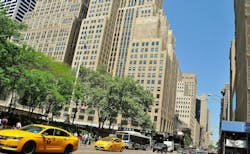Movement to protect historic buildings raises sharp criticism
By Peter Fabris, Contributing Editor
While the movement to preserve historic buildings has widespread support, it also has some sharp critics with well-funded opposition groups springing up in recent years.
Some opponents are linked to the Stand Together Foundation, founded and bankrolled by the Koch family’s conservative philanthropic organization, according to a column in Governing magazine. Many critics see historic preservation as a threat to “precious individual freedoms.”
A Stand Together senior fellow cited some preservation actions to bolster his case: An effort in San Francisco to convert a laundromat into an eight-story apartment building was stalled for eight years while city officials try to determine if the laundromat should be protected. In Denver, preservationists delayed the conversion of a 1960s diner into a new mixed-use retail/residential development.
Other critics, including some academicians, have criticized historic neighborhood preservation as “a stalking horse for gentrification and displacement of impoverished residents,” the column reads. Despite these critiques, the columnist makes a compelling case for preservation.
“Preservation serves the vital purpose of helping people to understand, appreciate and connect with their local history at a time when historical awareness is a missing element in much of America. If preservation has gone too far, it has gone too far in the right direction. We ought to be able to manage it without denigrating the things it has achieved.”
